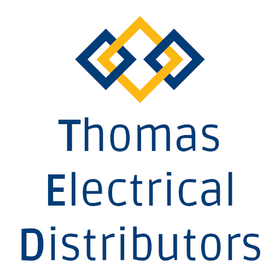LED Battens - A Complete Guide
A Comprehensive Guide to LED Battens

In the ever evolving landscape of lighting technology, LED battens have emerged as a groundbreaking solution, reshaping the way we illuminate our surroundings. These versatile fixtures offer a trifecta of benefits, combining energy efficiency, durability, and a wide array of applications. Whether you're a seasoned industry professional or a curious homeowner, this comprehensive guide aims to shed light on the intricacies of LED battens, covering technical specifications, installation regulations, and addressing frequently asked questions.
What is an LED Batten?
At its core, an LED batten is a linear lighting fixture that harnesses the power of light-emitting diodes (LEDs) as its primary light source. This design caters to a diverse range of applications, spanning residential, commercial, and industrial spaces. Noteworthy for their sleek and compact design, LED battens are suitable for both new installations and retrofitting existing lighting systems.
Technical Specifications
-
Size Options: LED battens are available in diverse sizes, such as 4ft, 5ft, and 6ft, catering to different applications and spatial requirements.
-
Wattage: Depending on the size and model, the wattage of LED battens varies. For example, a 4ft LED batten may consume between 18W to 36W, a 5ft LED batten typically ranges from 22W to 50W, and a 6ft LED batten might use between 30W to 60W.
-
Lifespan: With a lifespan often exceeding 50,000 hours of continuous use, LED battens significantly reduce maintenance costs.
-
Equivalent to Traditional Lighting: A 22W LED batten is roughly equivalent to a traditional fluorescent tube with a higher wattage, such as a 36W fluorescent tube, offering energy efficiency without compromising illumination.
-
Energy Efficiency: Consuming up to 80% less electricity compared to traditional lighting technologies, LED battens emerge as an environmentally friendly choice, contributing to reduced electricity bills.

Regulations:
When it comes to installing LED battens, adherence to local regulations and safety standards is paramount. In the UK, for instance, electrical work must comply with the Wiring Regulations (BS 7671). Therefore, the installation of LED battens should be entrusted to qualified electricians to ensure safety and compliance.
Maintenance and Installation Guidelines
Proper installation and maintenance play pivotal roles in ensuring the longevity and optimal performance of LED battens. Here are some essential guidelines:
-
Earth Connection: While LED battens typically do not require earthing as Class II double-insulated fixtures, it is crucial to verify the manufacturer's instructions for specific models.
-
Wiring to Plug: Although it is possible to wire LED battens to a plug, consulting an electrician is advisable to ensure safe and compliant installation.
-
Connection to Mains (UK): Connecting LED batten lights to mains in the UK should be performed by a qualified electrician to guarantee compliance with local regulations and safety standards.
-
Transformer Not Required: Operating on standard mains voltage, LED battens eliminate the need for a transformer.
-
Wiring LED Batten Lights: The wiring of LED battens involves connecting the fixture to the mains supply, a task best undertaken by a qualified electrician to ensure safety and compliance.
Conclusion: Lighting the Path Forward
In conclusion, LED battens have ushered in a lighting revolution, bringing forth a synergy of energy efficiency, durability, and versatility. When contemplating LED battens for your lighting needs, it is paramount to follow manufacturer guidelines, adhere to local regulations, and consider consulting a qualified electrician for installation. Embracing LED technology not only enhances your lighting experience but also contributes to a greener and more cost-effective future. Illuminate your space with confidence, knowing that LED battens are paving the way towards a brighter and sustainable tomorrow.
See our full range of LED Battens here!
LED Battens FAQ
LED battens typically have a lifespan of over 50,000 hours, significantly longer than traditional lighting sources.
Yes, LED battens are an excellent lighting solution due to their energy efficiency, long lifespan, and versatility.
A 5ft LED batten typically consumes between 22W and 50W, depending on the model.
A 22W LED batten is roughly equivalent to a traditional fluorescent tube with a higher wattage, such as a 36W fluorescent tube.
LED battens are typically Class II double-insulated fixtures and do not require earthing. Always check the manufacturer's instructions for specific models.
While it's possible, it's advisable to have a qualified electrician wire an LED batten to a plug to ensure safety and compliance.
Connecting LED batten lights to mains in the UK should be done by a qualified electrician to comply with local regulations and safety standards.
No, LED battens operate on standard mains voltage and do not require a transformer.
Yes, LED battens are cost-effective to run due to their high energy efficiency, leading to reduced electricity bills.
LED battens are complete linear fixtures, while LED tube lights are designed to retrofit into existing fluorescent tube fixtures. LED battens offer a more versatile and integrated solution.
LED battens are available in various sizes, including 4ft, 5ft, and 6ft, to suit different lighting needs and spaces.
The cost to run an LED light bulb for 1 hour in the UK depends on your electricity rate. On average, it may cost around 2-4 pence per hour. In conclusion, LED battens have revolutionized the lighting industry with their energy efficiency, durability, and versatility. When considering LED battens for your lighting needs, always follow the manufacturer's guidelines, local regulations, and consider consulting a qualified electrician for installation. Embracing LED technology not only enhances your lighting experience but also contributes to a greener and more cost-effective future.
